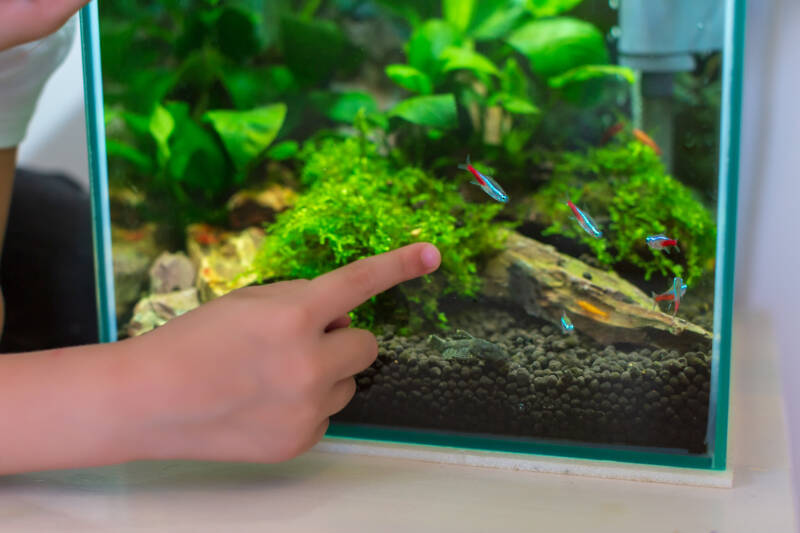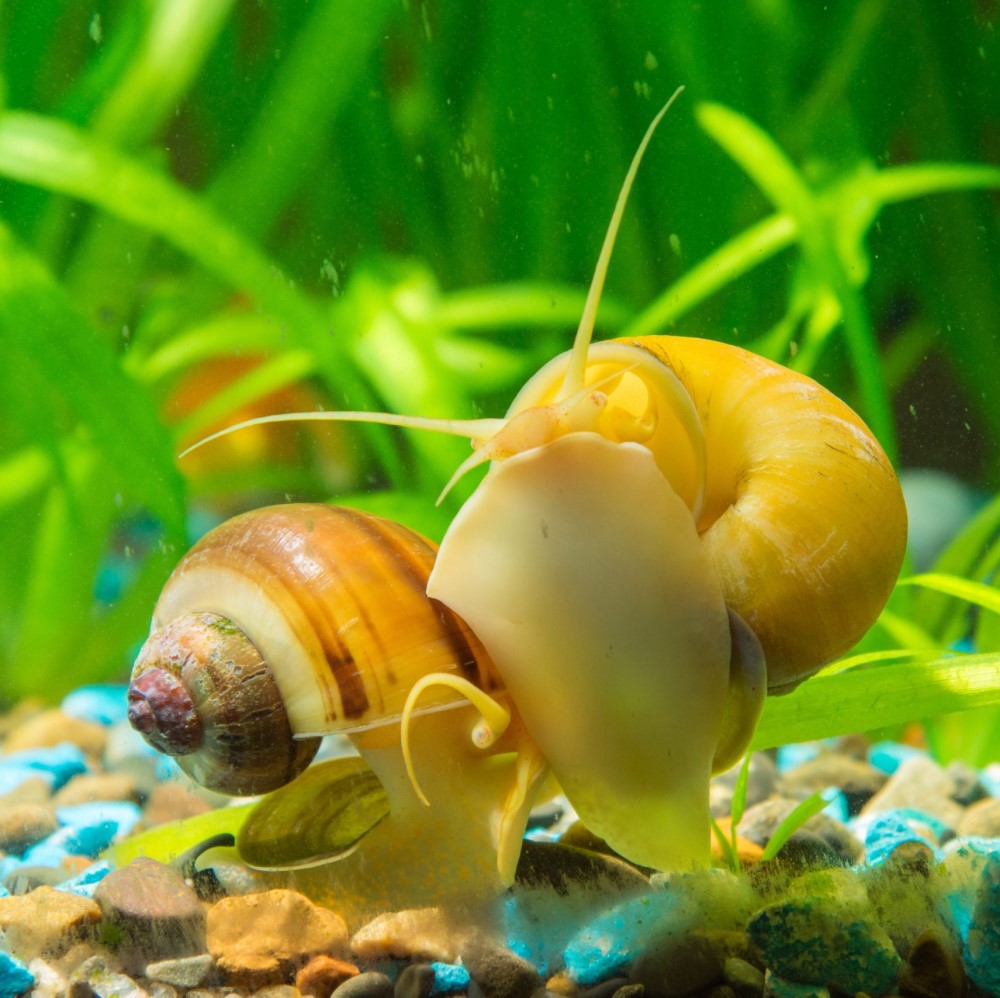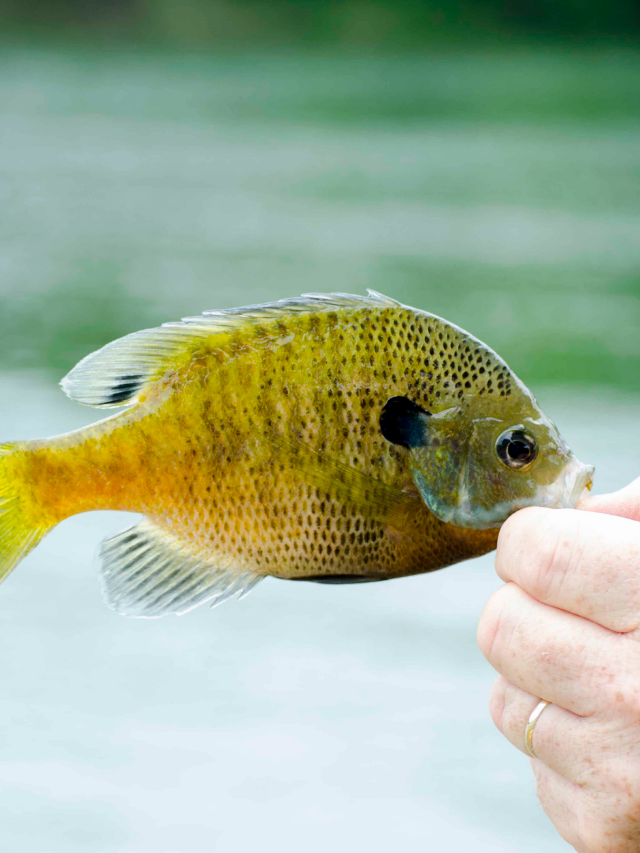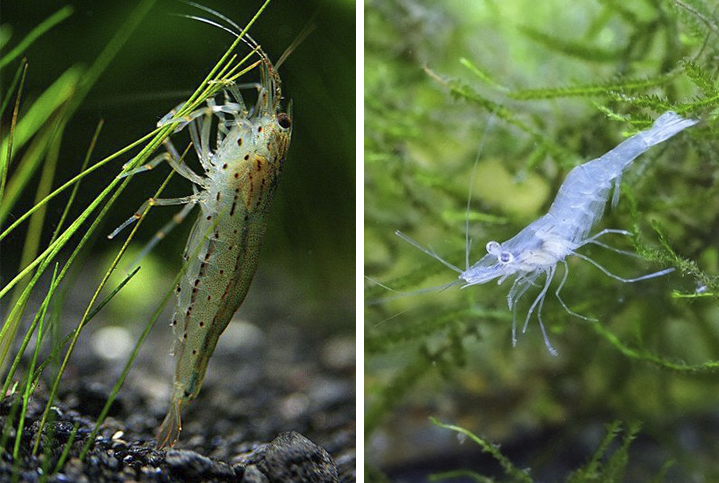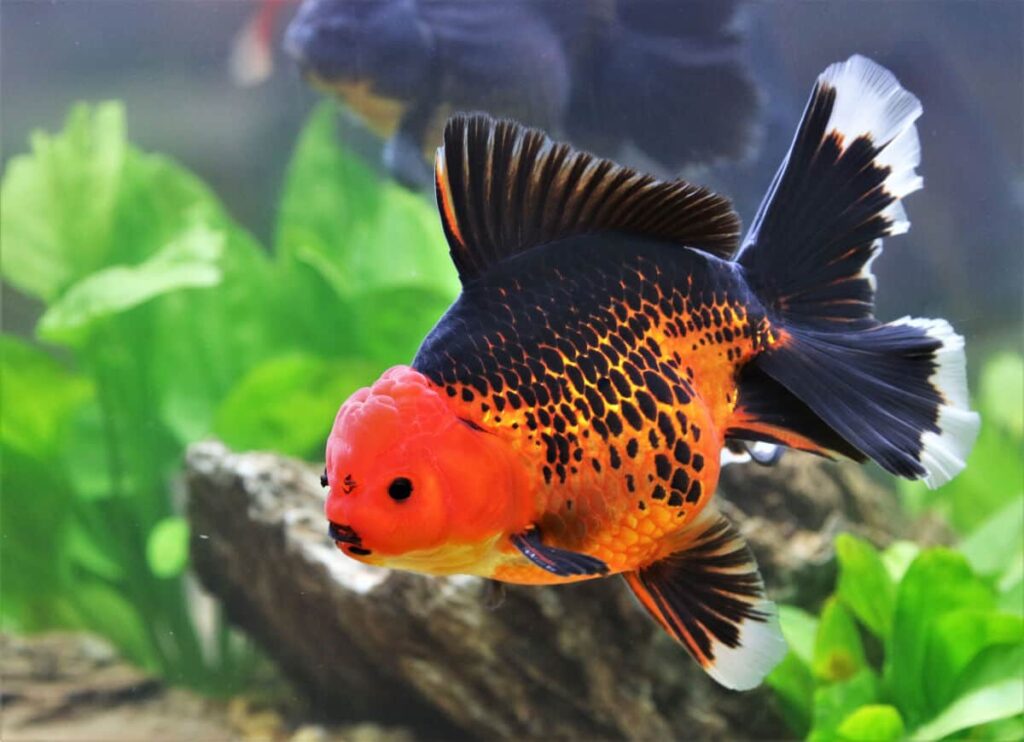

How do I know if my goldfish is pregnant? This is a popular question amongst goldfish owners, especially those who want to breed them. Surely, you can’t breed your goldfish successfully if you can’t tell its “pregnancy” status. Some signs tell if a goldfish is “pregnant” but not many people know what they are.
While some signs signal that your goldfish is “pregnant”, they can signal other conditions too. Hence, you must be able to read the signs correctly. In this article, we’ll help you learn how to tell if a goldfish is pregnant. With the right understanding of the signs, you can be able to tell if your goldfish is “pregnant”.
Besides, we bet you have several more questions about the goldfish “pregnancy” and we’re prepared to answer all of them. Let’s get right to it!

The first, oviparity, involves fertilization of eggs occurring within the female’s body before she drops her eggs into the water. The zygotes then develop externally. The second one, ovoviviparity, also involves fertilization of eggs happening internally but the zygotes are retained in the female’s body, and the young are born alive.
With the last method, ovuliparity, the female drops eggs in the water, and they’re fertilized by male sperm. As you might have guessed, the zygotes develop externally. Goldfish is a good example of fish that use ovuliparity to get “pregnant” and reproduce.
This is a tricky question but we can say there are no babies because technically, fish are not pregnant. Their unfertilized eggs don’t count as babies because they’re not alive until they’re fertilized. The eggs only start to grow or develop into little fish after they’re fertilized.
How do you know if a fish is pregnant? You know by the signs. The same signs apply to every breed of goldfish, whether it’s pregnant fantail goldfish or pregnant comet goldfish. As we promised, we’ll dissect the pregnant goldfish signs you must look out for below:

Usually, female goldfish start discharging special pheromones into the water when they’re ready to release their eggs. This action signals to male goldfish that they’re ready for breeding. Once a male goldfish takes the female goldfish’s hint, he chases her so that she can release her eggs for him to fertilize with his milt (sperm).

But, you can’t quickly run to a conclusion because something else might be at play. In some cases, swollen belly might mean your goldfish is sick. In a freshwater aquarium, the main culprit is often dropsy. It usually causes a goldfish to grow larger than its normal size.
According to a 2019 study Trusted Source Coelomic disorders of fishes Dropsy is a commonly applied term for coelomic distention due to ascites, or the effusion and collection of fluid freely throughout the coelomic cavity. pubs.er.usgs.gov , dropsy is generally a sign of another ongoing disease process. Dropsy in goldfish can be caused by a bacterial infection. Determining whether your fish has goldfish dropsy or pregnant can be tricky, so we advise you to monitor her movement for a few days. If you found pineconing scales on your goldfish, there’s a good chance it is sick.
Frankly, swollen belly is not the most reliable pregnancy sign in goldfish because even overfeeding may be the cause. Besides, your fish may be carrying eggs and still look completely normal.

However, breeding tubercles on male fish is no guarantee that your fish is “pregnant” but it signals a possibility that she’s in the breeding season.

Never be tempted to “squeeze” the eggs out of your fish to avoid causing damage to her.

But like the swollen belly condition, a lopsided belly is not the most reliable sign of pregnancy in goldfish. The lopsided belly might be the result of other conditions.
Of course, the main reason you want to know when your goldfish is pregnant is to breed it properly. We’ve got some tips to help you smoothen the process and get successful results. We’ll discuss these tips below:
Before you proceed to breed goldfish, you should know the proper age they’re ready for this process. Goldfish reach sexual maturity from their first to the second year. At that stage, they will be ready to start laying eggs, but the number and size may be small. A small number of small eggs is hardly desirable. Ideally, goldfish don’t start to lay proper eggs until their third or fourth year.
Another thing you must do is understand the male goldfish behavior. Like every other male, the libido of the goldfish typically increases when it’s starved of mating for a few days. Therefore, we recommend that you remove the male fish three days before spawning to increase their want and need to fertilize the female’s eggs.
Also, we recommend that you keep a ratio of two males to one female. This action will effectively raise the chances of spawning and fertilization.
You can also prepare your female goldfish for breeding by increasing her portion of food. If you were feeding her three times per day before, you should start feeding her four times daily. Don’t stop there; ensure a slight increase in the amount of good per feeding. Additionally, give the fish plenty of protein-heavy foods such as brine shrimp, bloodworms, daphnia, etc.
However, giving more food to your goldfish shouldn’t make you overfeed her. Be careful to avoid such a situation.
When breeding goldfish, you can’t turn a blind eye to the fish tank temperature because of its vital impact. Without the right level of temperature, your fish can’t breed properly. The optimal tank temperature is 20 degrees Celsius, so you must do all you can to ensure that.
If necessary, employ an aquarium heater to push the tank water to the proper temperature. Thankfully, there’s no shortage of high-quality heaters on the market.
For example, the Mylivell Aquarium Heater boasts admirable quality and power. Made of high-quality quartz glass, the heater’s temperature can be adjusted automatically with a range of 20° – 34° C (65° F – 93° F).
Once you find out your goldfish is “pregnant”, you have the responsibility of caring for her. Luckily for you, caring for the fish is not much work. Below, we’ll discuss a few things you can do to help your pregnant goldfish’s breeding process:
There’s no specific time that the goldfish stays “pregnant”. But we do know that they carry their eggs until they’re fertilized by the male. Ultimately, it’s up to you to detect your goldfish’s “pregnancy” in good time and provide her with two males, so her eggs can be fertilized in the right environment.

Besides, there are various ways to raise water oxygenation such as adding a strong filter, increasing water surface area, adding live plants, having an adjustable flow rate, and increasing water surface agitation. Sometimes, water changes can also help to improve oxygenation.
Moreover, an air pump can help to increase oxygen in the aquarium. According to most reviews, the hygger Quiet Mini Air Pump is ready-made for the aquarium, thanks to its great quality and compact design. Driven by a thin piezoelectric ceramic plate, the air pump dissolves oxygen quite well.
Additionally, it helps to use the right fish tank or aquarium too. You can’t possibly have the right level of oxygen in a bad fish tank. There are a lot of effective options on the market but you have to look in the right places. Depending on your preference, you can find the best 5-gallon fish tank, the best 10-gallon fish tank, and the best 20-gallon fish tank on the market.

We recommend feeding your “pregnant” goldfish twice or thrice daily. While doing so, remember to avoid overfeeding her as this situation causes indigestion and consequently contaminates the aquarium. The quality of food is also important. Ensure you meet the fish’s nutritional needs such as 30% protein feed, etc.
Another way to provide your “pregnant” goldfish with proper care is to create a spawning mop. A spawning mop is designed to be a soft surface for goldfish to lay their eggs on. Yes, this looks like a mop as its name implies. Goldfish typically lay their eggs on soft plants, thanks to their favorable surfaces for the development of zygotes.
Spawning mops simulate these live plants and breeders usually embrace them because they can easily remove them to a fry grow-out tank after the spawning process is completed. These mops also help to protect eggs/zygotes from predatory parents or other species.
Good thing is, you can make a spawning mop yourself if you don’t want to buy it. But you’ll need a high-quality yarn to help you. We recommend the Red Heart Super Saver Yarn, which is made of 100% acrylic medium worsted material and measures 364-yards in length. In this video, you can learn the simple steps involved in making your own spawning mop:
A “pregnant” goldfish cannot fare well when it’s not in the right environment. Specifically, your goldfish needs the right level of temperature to breed properly. While goldfish can survive in waters between 10 and 25° C, we recommend between 20 and 23° C for “pregnant” goldfish. This range of temperature can encourage strong growth.
Additionally, try to avoid sudden changes in temperature settings because the goldfish prefer stability in the aquarium temperature.
You must have heard or read a lot of things about goldfish “pregnancy” but how many of them are true? It’s possible that only a small number of them are true and that doesn’t help you. Below, we’ll debunk the most common myths that are associated with goldfish “pregnancy”:
The number one myth is that female goldfish exhibit nesting behavior. This is simply not true, logically and scientifically. Most people know that only birds nest. Since goldfish are fish and not birds, it’s hard to come to terms with claims of them showing nesting behavior. It’s hard because it’s not true.
As a matter of fact, goldfish don’t care about where they lay their eggs. They throw them anywhere they can. That’s a sharp departure from birds who are deliberate about where they lay their eggs. Interestingly, goldfish even eat their eggs if they can.
Another myth is that goldfish refuse their food when they are “pregnant”. They are fish, not humans. Humans can develop mood swings during pregnancy and refuse certain foods but that’s not a character of goldfish. If your fish refuses food, don’t mistake it for “pregnancy”. Rather, you should know that she’s sick. A healthy “pregnant” goldfish will always have an appetite.
Some claim that goldfish that sit at the bottom of the fish tank is “pregnant” but that is not true. Being loaded with eggs won’t cause a goldfish to sit at the bottom of the water tank. In most cases, the fish are sitting at the bottom of the water because they’re not feeling well. Sometimes, it’s because the water quality is poor.
Finally, sluggish behavior in goldfish has no relationship with “pregnancy”. Rather, the condition is usually a sign of a health problem.
Frankly, telling if a goldfish is “pregnant” can be tricky since you can’t conduct a test to find out. Instead, you can only look out for certain signs to make your conclusions. Unfortunately, not all of these signs are fully reliable. For example, a swollen belly can signal the presence of eggs in your goldfish but it can also be a result of sickness.
Thankfully, there are many other signs to check. For example, eggs coming out of your fish when you pick her up is a reliable sign but that won’t always happen, so you’ll have to explore all of the signs. Thanks to our detailed article, we bet you now know how to tell if a goldfish is pregnant.
